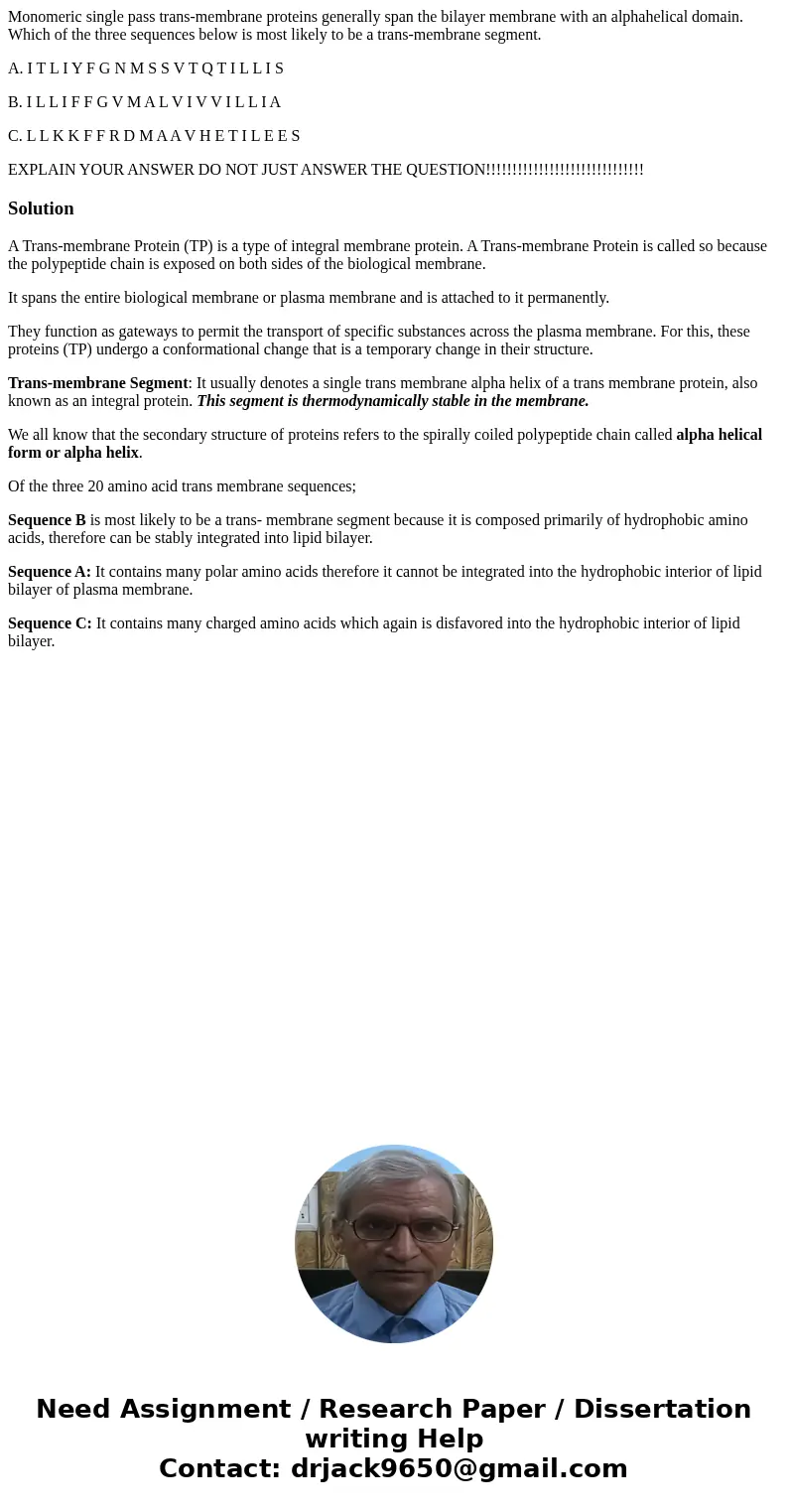Monomeric single pass transmembrane proteins generally span
Monomeric single pass trans-membrane proteins generally span the bilayer membrane with an alphahelical domain. Which of the three sequences below is most likely to be a trans-membrane segment.
A. I T L I Y F G N M S S V T Q T I L L I S
B. I L L I F F G V M A L V I V V I L L I A
C. L L K K F F R D M A A V H E T I L E E S
EXPLAIN YOUR ANSWER DO NOT JUST ANSWER THE QUESTION!!!!!!!!!!!!!!!!!!!!!!!!!!!!!!
Solution
A Trans-membrane Protein (TP) is a type of integral membrane protein. A Trans-membrane Protein is called so because the polypeptide chain is exposed on both sides of the biological membrane.
It spans the entire biological membrane or plasma membrane and is attached to it permanently.
They function as gateways to permit the transport of specific substances across the plasma membrane. For this, these proteins (TP) undergo a conformational change that is a temporary change in their structure.
Trans-membrane Segment: It usually denotes a single trans membrane alpha helix of a trans membrane protein, also known as an integral protein. This segment is thermodynamically stable in the membrane.
We all know that the secondary structure of proteins refers to the spirally coiled polypeptide chain called alpha helical form or alpha helix.
Of the three 20 amino acid trans membrane sequences;
Sequence B is most likely to be a trans- membrane segment because it is composed primarily of hydrophobic amino acids, therefore can be stably integrated into lipid bilayer.
Sequence A: It contains many polar amino acids therefore it cannot be integrated into the hydrophobic interior of lipid bilayer of plasma membrane.
Sequence C: It contains many charged amino acids which again is disfavored into the hydrophobic interior of lipid bilayer.

 Homework Sourse
Homework Sourse